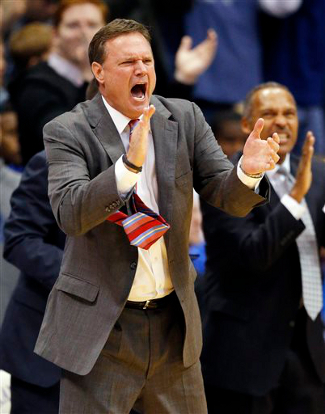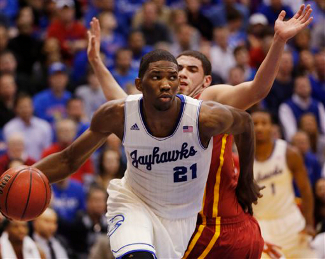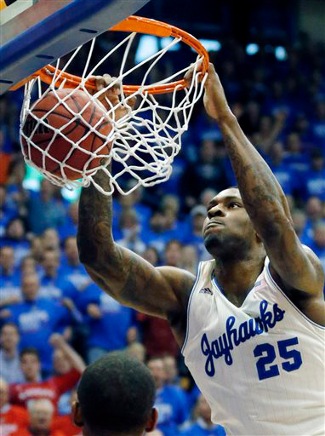#6/7 Kansas Jayhawks (16-4 overall, 7-0 Big 12) at #25/ARV Texas Longhorns (16-4, 5-2)
Erwin Center | Austin, TX | Tip: 3 P.M. CT | TV: ESPN
The Big 12’s two hottest teams meet at the Frank Erwin Center this afternoon, as the Jayhawks and Longhorns put their seven-game and five-game winning streaks on the line. Texas is returning to action after a week off, and is looking to notch its fourth consecutive win over a ranked opponent. It was a feat that had not been seen since North Carolina ran a four-game gauntlet in 1996-97, until Kansas did it just a few weeks ago. With seven different Big 12 teams bouncing in and out of the polls in conference play, the tough tests come often, but only Kansas and Texas have managed to string together lengthy winning streaks in the country’s top conference.
Texas’ streak has propelled the team from a spot on the bubble to being safely in the NCAA picture — for now. With the Big 12 schedule providing a stiff test night after night, and with the league’s three toughest road tests still to come for the Longhorns, there’s still the danger of a losing skid that could muddy Texas’ NCAA picture. Another win this afternoon over a ranked opponent — and the No. 1 team according to RPI — would give Texas even more insurance against any late-season stumbles.

Bill Self is fired up about his team’s 7-0 Big 12 start
(Photo credit: Orlin Wagner/Associated Press) 
Defenses have a hard time slowing down Joel Embiid
(Photo credit: Orlin Wagner/Associated Press) 
Tarik Black would be in the starting five for most teams
(Photo credit: Orlin Wagner/Associated Press) |











